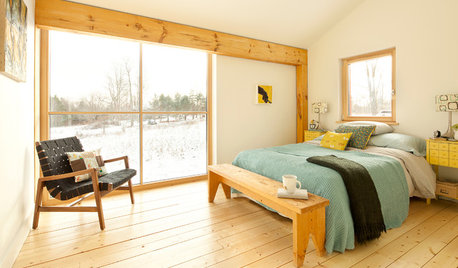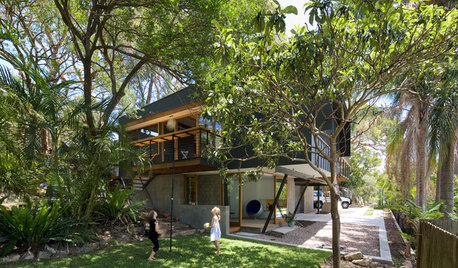Sick Building Syndrome
drew51 SE MI Z5b/6a
9 years ago
Related Stories

LIFE10 Feel-Better Things to Do on a Sick Day at Home
Nourish, pamper and heal yourself when a cold keeps you housebound, with these restorative ideas
Full Story
CONTRACTOR TIPSBuilding Permits: What to Know About Green Building and Energy Codes
In Part 4 of our series examining the residential permit process, we review typical green building and energy code requirements
Full Story
GREEN BUILDINGInsulation Basics: Heat, R-Value and the Building Envelope
Learn how heat moves through a home and the materials that can stop it, to make sure your insulation is as effective as you think
Full Story
HEALTHY HOMEGet Cleaner Indoor Air Without Opening a Window
Mechanical ventilation can actually be better for your home than the natural kind. Find out the whys and hows here
Full Story
REMODELING GUIDESSo You Want to Build: 7 Steps to Creating a New Home
Get the house you envision — and even enjoy the process — by following this architect's guide to building a new home
Full Story
CONTRACTOR TIPSBuilding Permits: When a Permit Is Required and When It's Not
In this article, the first in a series exploring permit processes and requirements, learn why and when you might need one
Full Story
CONTRACTOR TIPSBuilding Permits: 10 Critical Code Requirements for Every Project
In Part 3 of our series examining the building permit process, we highlight 10 code requirements you should never ignore
Full Story
HOUZZ TOURSHouzz Tour: Modern Treetop Living in Sydney
Encouraging connections and calm, this Australian family home among the trees is all about subtlety
Full Story
GREEN BUILDINGHouzz Tour: See a Concrete House With a $0 Energy Bill
Passive House principles and universal design elements result in a home that’ll work efficiently for the long haul
Full Story
REMODELING GUIDES10 Design Features to Kick Your Remodel Up a Notch
You’ve done the legwork on your home renovation or new build. Now it’s time to plan your reward
Full Story







drew51 SE MI Z5b/6aOriginal Author
BrianKnight
Related Professionals
Marina Landscape Architects & Landscape Designers · Finneytown Landscape Architects & Landscape Designers · Buford Landscape Contractors · Cambridge Landscape Contractors · Ocoee Landscape Contractors · Panama City Beach Landscape Contractors · Point Pleasant Landscape Contractors · Bellflower Solar Energy Systems · Hayward Solar Energy Systems · Voorhees Solar Energy Systems · Wakefield Solar Energy Systems · Fort Washington Window Contractors · Mokena Window Contractors · Glenpool Fence Contractors · King City Fence Contractorsdrew51 SE MI Z5b/6aOriginal Author